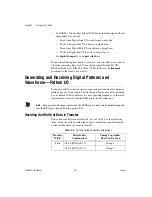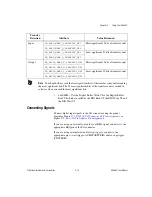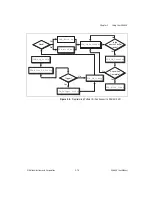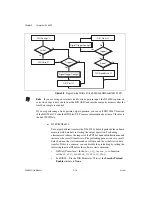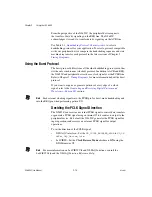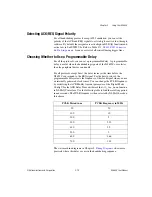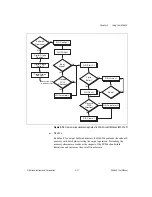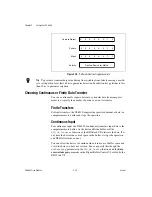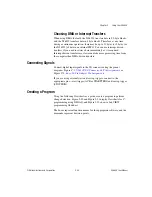
Chapter 2
Using Your NI 653X
2-18
ni.com
From the perspective of the NI 653
X
, the peripheral device requests
the transfer of data by signaling on the REQ line. The NI 653
X
acknowledges it is ready to transfer data by signaling on the ACK line.
Use Table 3-1,
Handshaking Protocol Characteristics
handshaking protocol for your application. To select a protocol compatible
with your peripheral device, compare the handshaking sequence and state
machine diagrams for each protocol in the later sections of Chapter 3,
Using the Burst Protocol
The burst protocol differs from all the other handshaking protocols in that
it is the only synchronous (clocked) protocol. In addition to ACK and REQ,
the NI 653
X
and peripheral device share a clock signal over the PCLK line.
, for more information about the burst
protocol.
If you want to acquire or generate patterns of every edge of a clock
signal, refer to the
Generating and Receiving Digital Patterns and
Note
Feed external clocking signals into the PCLK pin for burst-mode handshaking and
into the REQ pin when performing pattern I/O.
Deciding the PCLK Signal Direction
The NI 653
X
can receive an external PCLK signal to control data transfers
or generate a PCLK signal using an internal 32-bit counter to output to the
peripheral device. By default, the NI 653
X
generates the PCLK signal for
input operations and receives an external PCLK signal for output
operations.
To set the direction of the PCLK signal:
•
NI-DAQ C interface—Set the
ND_CLOCK_REVERSE_MODE
to
ND_ON
in
Set_DAQ_Device_Info
.
•
LabVIEW—Set the
Clock Reverse Mode
attribute to
ON
using the
DIO Parameter VI.
Note
For more information on LabVIEW VIs and NI-DAQ functions, consult the
LabVIEW Help
and the
NI-DAQ Function Reference Help
.
Содержание NI 653 Series
Страница 1: ...PCI 6533...



